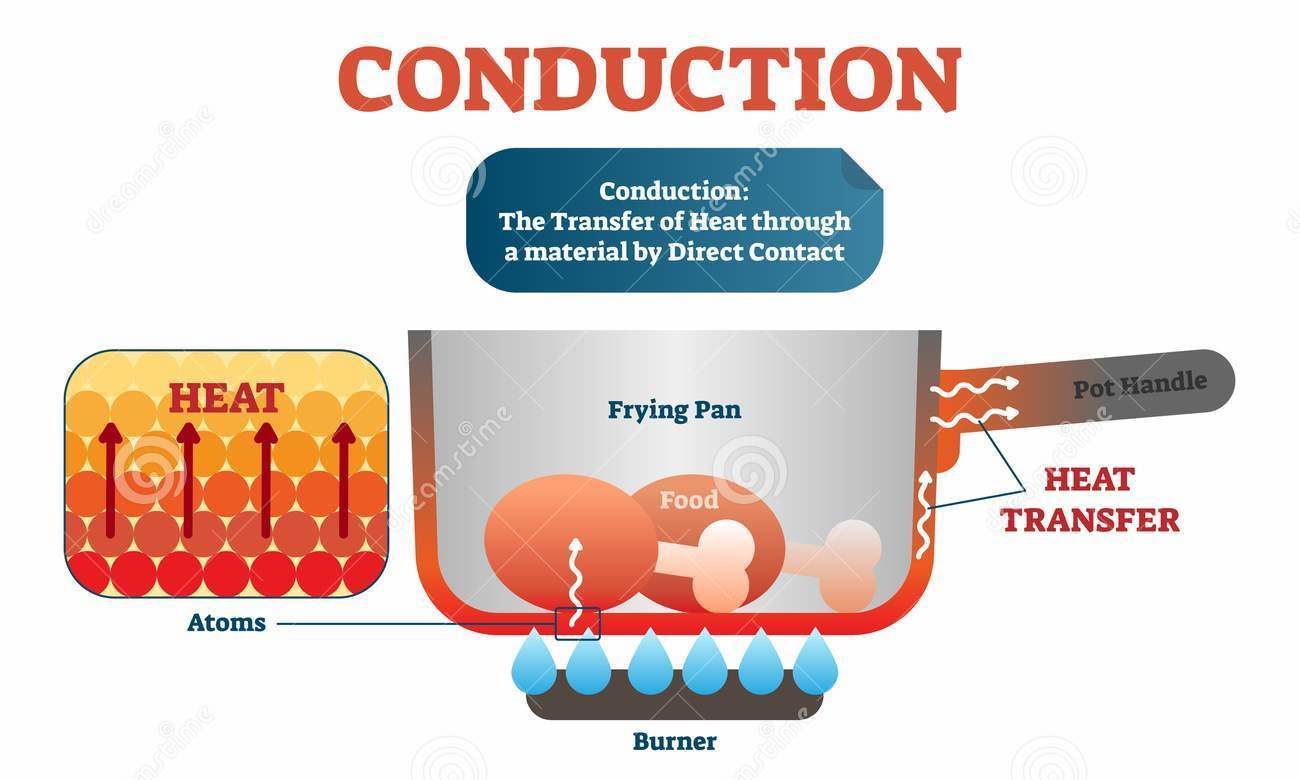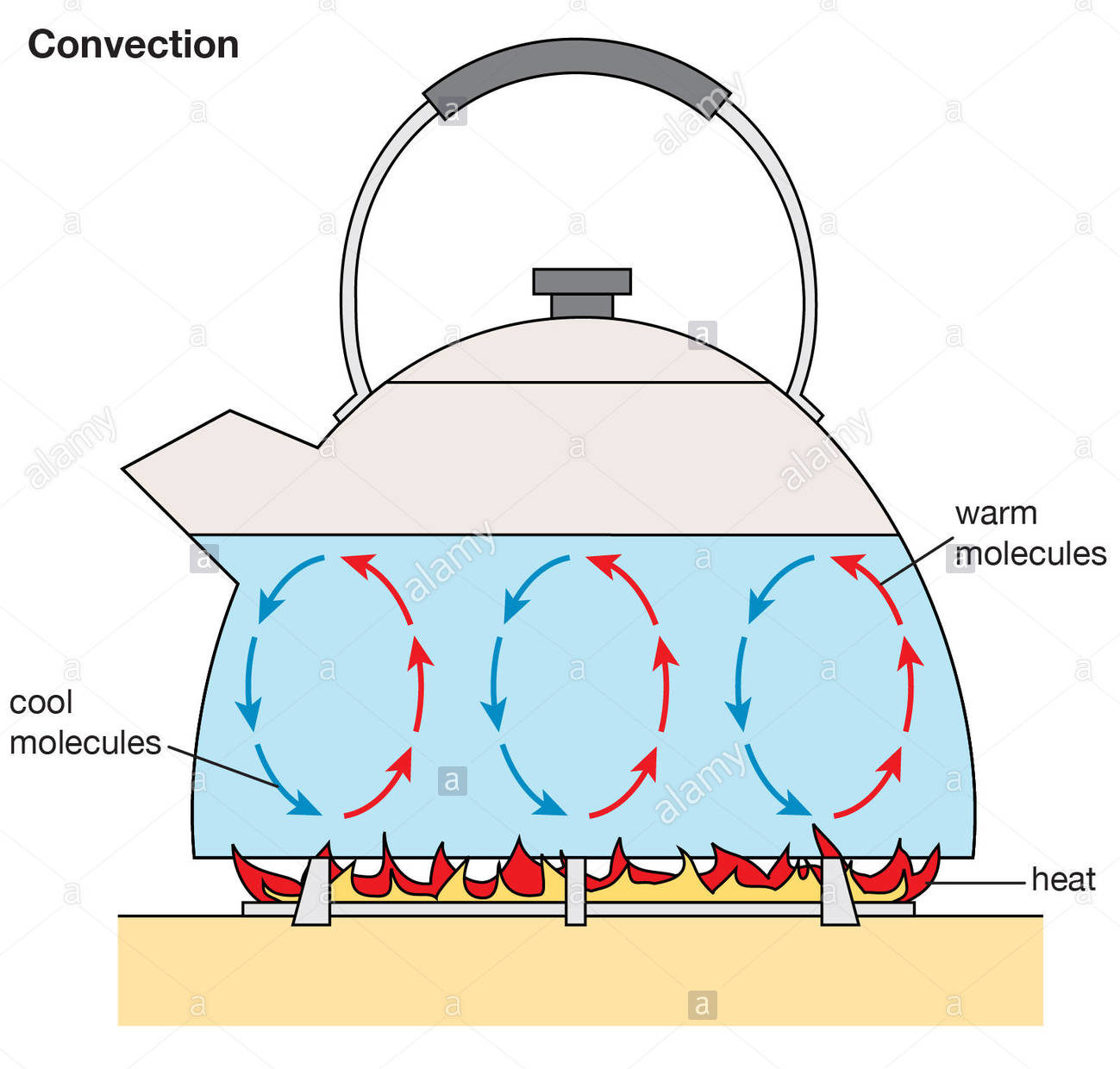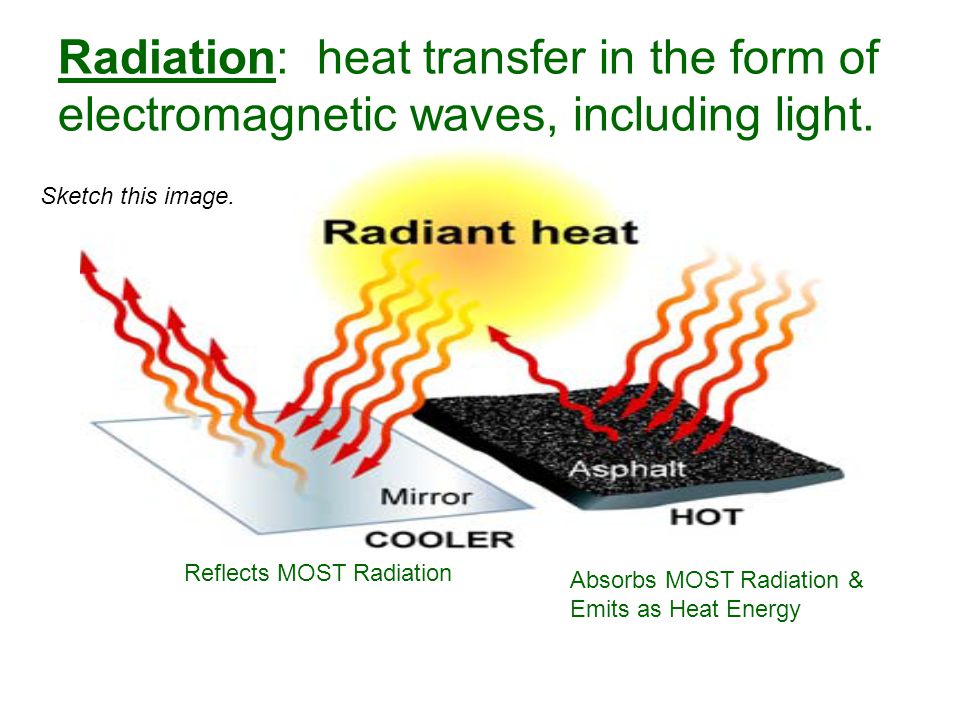Back to: BASIC SCIENCE JSS2
Welcome to Class !!
We are eager to have you join us !!
In today’s Basic Science class, We will be discussing Thermal Energy – Heat Transfer. We hope you enjoy the class!

TOPIC: THERMAL ENERGY 2 – HEAT TRANSFER
Heat flows from a hot object to one that is cooler. When you feel a warm object, you are actually feeling thermal energy, which is the movement of molecules that make up the object. This process continues until the temperatures of the whole system become equal. Cooling machines, such as refrigerators and air conditioners, actually use heat transfer by pulling heat from its inner area where food and other perishables are stored and transfers it to the region outside. This is why the back of a refrigerator is warm. Heat transfer occurs in three ways as mentioned already in the last lesson; conduction, convection and radiation.
CONDUCTION
Conduction is the movement of heat through solid materials without any obvious movement of the materials. When a metal spoon is used to stir a cup of a very hot tea or coffee, the spoon quickly becomes very hot too. The heat from the hot water travels up the spoon by conduction. In the same way, if one end of a metal rod is placed in a fire, heat is conducted along the rod so that the whole rod soon becomes too hot to touch.

Materials that conduct heat are referred to as conductors. Some substances conduct heat more than the others. Substances which conduct heat readily are called good conductors while substances that do not conduct heat readily are called poor or bad conductors. Metals are good conductors of heat but most other materials are not. For example, a plastic spoon conducts very little heat. A cooking pan is a good example of how we use conductors and insulators (substances that do not conduct heat well). The pan is made of metal so the heat is conducted through it and cooks the food. The handle is made of an insulator such as wood or plastic so it does not get too hot to hold. Iron is also a good conductor. A house with an iron roof will heat up quickly when the sun shines. It will also cool down quickly at night or in cold weather.
CONVECTION
Convection is the transfer of heat by the movement of liquid or air. Liquids are generally poor conductors of heat. Fluids and gases are poor conductors of heat so heat flow takes place in fluids through the process of convection. When a portion of a liquid near the bottom of a container is heated, the liquid molecules near the heat source, gain heat and their kinetic energy increases. The molecules expand and become less dense and therefore rises. The cooler molecules at the top move downwards to become heated.

The whole process continues until the whole liquid becomes hot. Think about what happens when we boil water in a pan. First, heat is conducted through the metal pan and heats the water at the bottom. The hot water rises by convection and is replaced by cooler water from higher in the pan. This cooler water is now heated by conduction through the pan and the whole process continues until all the water boils. Another good example of convection is the smoke rising from a fire. Air that has been heated by the fire rises by convection and carries the smoke with it.
RADIATION
When we stand in the sun we can feel its heat on our skin. How does the sun’s heat reach us? There is no metal to conduct it and no fluid to carry it by convection. In fact, the heat travels straight through space, and through the atmosphere, in the form of heat rays. We say that the sun’s heat reaches us by radiation. Radiation is a method of heat transfer which does not involve any material (or medium) between the source of heat and the part heated. Fires radiate heat.

So do all hot objects such as stones and buildings that have been heated by the sun. When you sit near a fire, you are warmed by heat rays. But what happens if someone sits between you and the fire? The heat is cut off because heat rays travel in straight lines only. Heat rays cannot bend around objects that get in the way. Radiation is used in heaters. A coil of red hot wire produces heat, and a curved screen of shiny metal reflects the heat so that most of it radiates in front of the heater. Radiation is the process that helps to dry our clothes in the sun.
With the explanations and examples given, you should be able to differentiate between the three methods of heat transfer.
We have come to the end of this class. We do hope you enjoyed the class?
Should you have any further question, feel free to ask in the comment section below and trust us to respond as soon as possible.
In our next class, we will be talking about Reproductive Health. We are very much eager to meet you there.

Please, explain conduction again,it isn’t clear.
I don’t understand
What do you mean
Alright